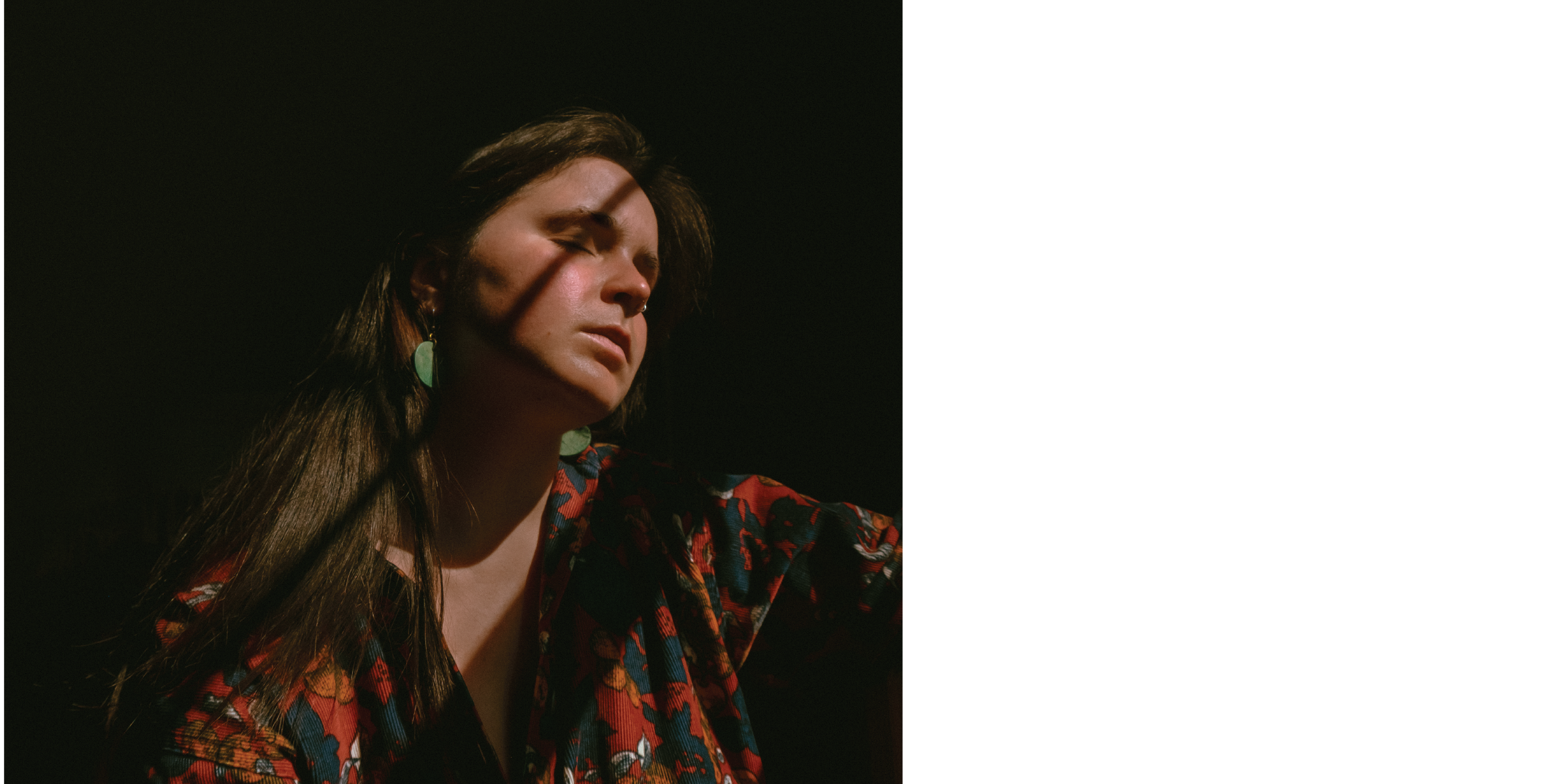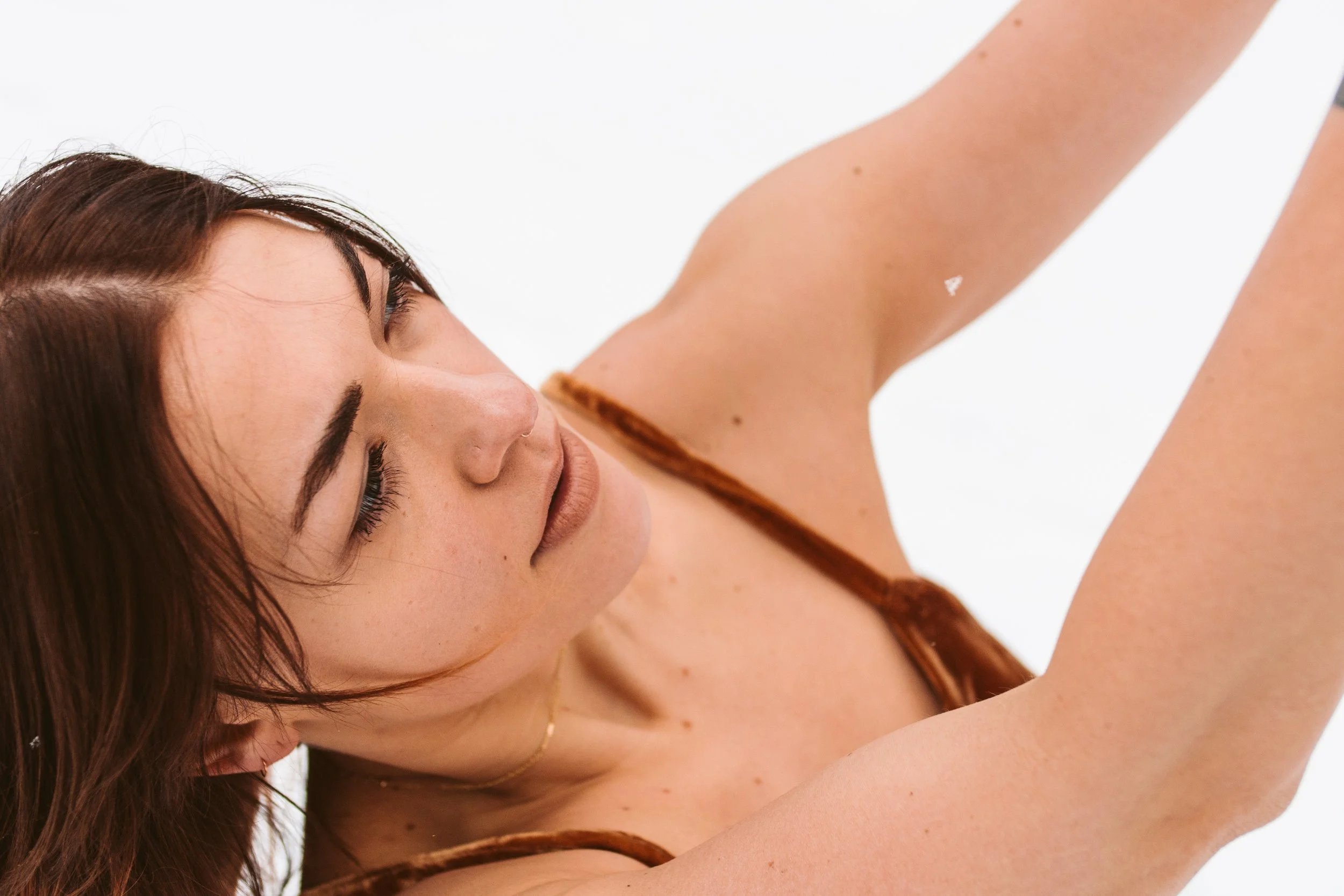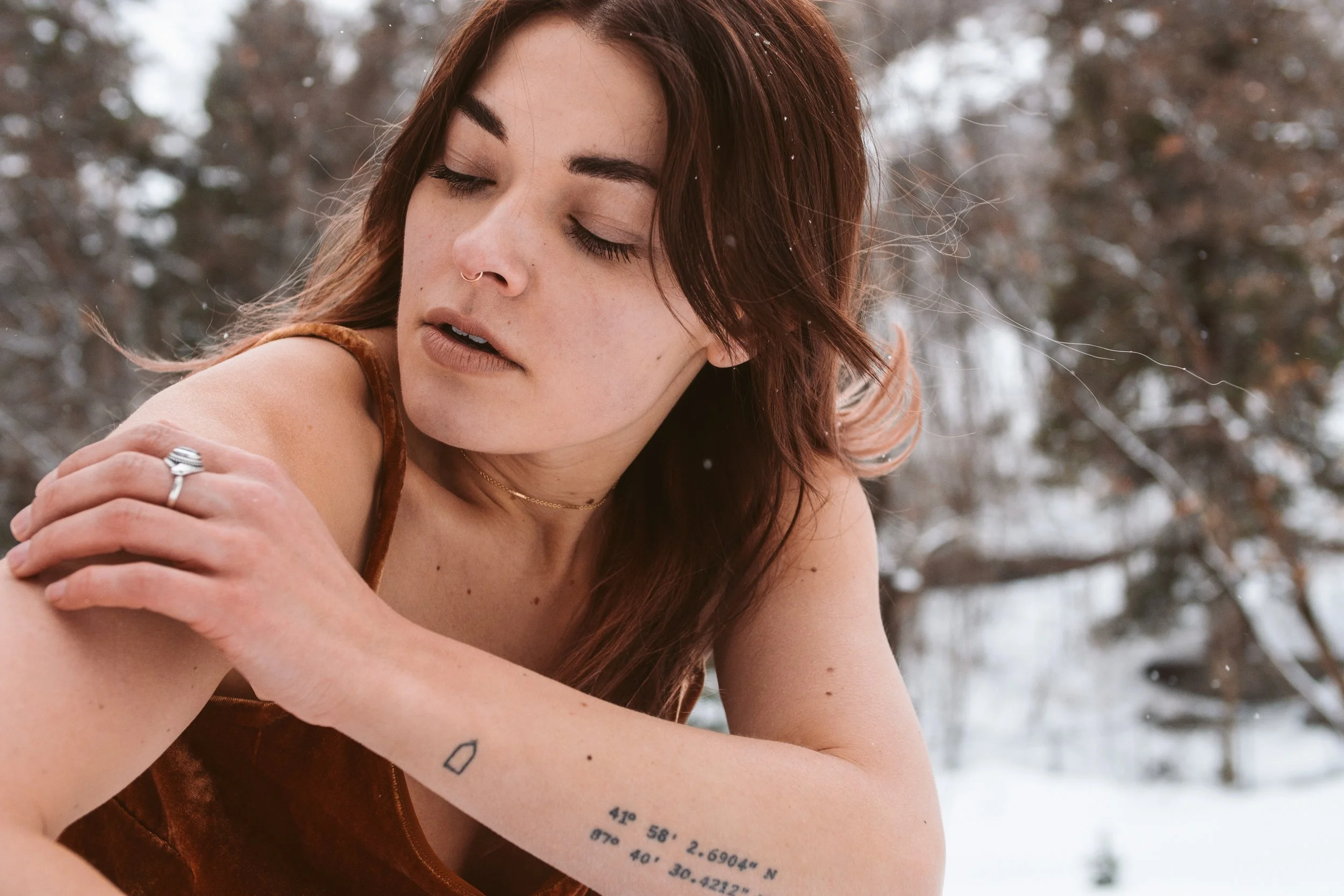
SAGE STORIESA Conversation with Tori Duhaime
Interview by Bella Brodsky
Shot by Tori Duhaime
Instagram
Hi, Tori! Let’s begin with a little introduction: tell me who you are, the place you call home, and the space you work within!
My name is Tori Duhaime and I welcome pronouns including she/her/hers and they/them/theirs. I am a photographer and movement artist who grew up in southwest Colorado on the ancestral lands of the Ute and Pueblo people -- at a very beautiful intersection of the desert and mountains. I began dancing in the 2nd grade as many young girls start with ballet, tap, and jazz classes; I decided instantly that it would be my career which I pursued relentlessly through college while intending to be a choreographer. Photography was always a side interest since picking up a 35mm Canon AE1 in high school and I didn’t even try shooting digital photos until I graduated college with a BFA in Modern Dance from the University of Utah. I slowly found myself retreating from the studio and through the support and trust of friends and the Salt Lake City dance community (Eastern Shoshone and Goshute land), I had space to redefine my artistic medium and purpose while maintaining a relationship between movement and landscape. In October 2020, my partner and I relocated to Richmond, VA on ancestral Powhatan land and I currently remain working for Ririe-Woodbury Dance Company as their Marketing Director remotely, and I’m the content producer for Ravel Media - a dream team producing podcasts that discuss various intersectional experiences in the outdoors. I’m also a freelance photographer and look forward to learning how I can provide imagery that can support this new-to-me community.
Tell me about your experiences outdoors growing up, and how those have shaped who you are now. And, what experiences and activities outdoors bring you the most joy as of late?
My childhood was dependent on an extremely “outdoorsy” lifestyle. I used to pick fresh tomatoes off my mothers plants upon returning home from school and my weekends were allocated for outdoor activities in what my family referred to as “the church of the great blue dome.” Being outdoors was simply a part of life for most kids in Durango, so much so that the privilege of such wasn’t really exposed to me until I moved away for college which has since required a lot of unpacking. I remain at my most joyful while skiing, mountain biking, or on a river - but I’ve also been working at dismantling some of my own toxic competitive nature and remember that being outdoors in any capacity is a valid experience with nature; so it’s just as important to note that sitting out on my porch with a beverage in hand brings me ample joy.
Ultimately, creating in nature is what fills my cup. What started as simply feeling the resemblance of dance in my body while skiing has evolved into an admiration for movement with landscapes collectively. This most often translates to photographing dancers in outdoor spaces - foreign to the usual safely provided studio - but a rock climber’s body organizing itself around a boulder and the way joy manifests itself in somebody’s posture while sitting with a sunset stirs the same spark for me.
I’d love to hear more about your passion and love for dance and movement. What inspired that and how are you working within that space now? What about movement is so intriguing to you?
Dance was my everything as a kid. I was often teased for how invested I was including doing an independent study as early at 8th grade on the choreographic elements - I was very academic about it
from an early age. It also came with a lot of pain, beyond the physical sense, when I had to reconcile that the ballet world would not accept my body - something that I still expect the dance industry to tear down such harmful ideas of worth. However, that early conversation pushed me towards modern and contemporary techniques from a young age. The more I dove into the wide range of researched movement, the more natural and personal dancing became. It evolved to an understanding of what my body could do rather than what it couldn’t and how to care for it with strength, breath, and consistency. I really miss the regular physical practice of dance but I needed to give myself space a couple of years ago. The past few years have been full of working to recognize how it’s fuelled my faults as much as my strengths - a never ending endeavor. Once I took a more back seat approach to supporting dance behind the lens and in administration, the most it unveiled to me how relative dance is in this world yet underserved. I want to see dance be valued in culture which means letting eurocentric dance take a back seat and revisiting the role dance has had in various cultures outside of elite art consumption and funding. I don’t know how I fit into this yet, and that's possibly the point, to step back.
Tell me about the work you are doing right now at the intersection of the outdoors, movement, and photography!
Admittedly, it all began with making excuses. I didn’t get to ski for a couple of years while going to school in Alabama (Muscogee/Creek territory) and I never knew I would miss it so much. Transferring to the University of Utah (Eastern Shoshone and Goshute land) gave me back that privilege and I was willing to say/do anything to convince my professors it was safe for me to ski. I wrote papers cross analyzing the culture, movement, and styles. My senior choreography and my first dance film were both rooted in analyzing the way movement style becomes inherent when given a function of risk which referenced skiing and skateboarding. It all was a part of me wanting to live the best of both worlds and it exposed an actual outlet for me. I’ve since kept photographing dancers in landscapes and the risks became the uncertainty of the ground, the affect wind or rain has on an artists’ movement choices, and the way their bodies organize themselves to keep safe in momentum. It removes performance and sort of strips down the body to just the movement and human behind it. I’m not so interested in the romanticism of dance, though my work isn’t void of such, I just want to see the humanity in movement.
In our previous conversation, you mentioned this phrase “existing and not performing”, can you tell me more about that concept in relation to the work you do and the photographs you take!
I frequently refer to this as “style x survival”. When dancers are brought into unfamiliar spaces and I can bring the viewer’s eye so much more intimately to their movement, their focus on protecting their bodies and understanding the organic space overrides the need to project their performance. I love this because it reveals nuances. It’s not often my photos will showcase the full body, rather I’m curious how it frames the land or vice versa. If the image could be experienced the same as if it was witnessed in real time, then I feel I’m taking away from the importance of live arts, rather than offering a new perspective to it by introducing a supporting medium, photography. I love the way hands furl and unfurl or how the eyes chose their directions to seek safe footing. The transitions are so much more beautiful to me than the heightened moment of an extended leg or notable shape.
I feel it’s incredibly important I also recognize that when talking about dancers in relationship to the land, there is juxtaposition as I most often am working with dancers of similar background to me in eurocentric movement on stolen Indigenous land and myself as a white artist. This is an imperfect creative process and one I question indefinitely as my own gaze comes with that of colonizers. While I discuss that the land changes the way the body makes choices, there is a depth to this that I cannot understand nor wish to pretend I do. My creative process takes place on stolen land which requires constant return to its original caretakers in the form of money, activism, and a willingness to accept, admit, and learn from the faults my art has the ability of causing despite my best intentions.
What books and podcasts are you enjoying as of late?
I’m notorious for not finishing books and I have always stuck with rather heady non-fiction genres. My book pile is almost always stacked with 4 or 5 books that have 4 to 5 chapters read into. The most recent book I just started is “Recovering the Sacred” by Winona LaDuke. I have some texts that I return to often that are published online. A favorite that I’ve frequented since it’s publishing in 2018 is “Does Abstraction Belong to the White Body?” by choreographer, Miguel Gutierrez. (https://bombmagazine.org/articles/miguel-gutierrez-1/)
Since my work includes producing ads for podcasts, I’m often listening to the ones I have the privilege of playing a small role in producing content for which includes “She Explores” and “Nomads at the Intersection” - I’m also so excited for my dear friend, Laura Borichevsky’s new show coming out, “Sex Outside”. Others that I frequent are “On the Land”, “Freakonomics”, and “Yo, is this Racist?” My partner and I have also become that couple that listens to “Wait, Wait Don’t Tell Me” when they come out each week when driving to or from a weekend adventure.
Thank you so much for chatting with me, Tori! Lastly, for those looking to follow along with your content and support you,
where can they find you?
You can best support me best by supporting the arts, particularly your local project based, Indigenous, Black, trans, disabled, brilliant, and powerful artists. Similarly, support legislation that advocates for the protection of public lands, grassroots work to dismantle systems of oppression that continue to block access to the outdoors, and protect/advocate for the people who are disproportionately harmed by environmental racism. In order to save the arts, we have to save the people. In order to protect the people, we have to care for the planet.
My website is toriduhaime.com and my instagram is @toriduhaime.



